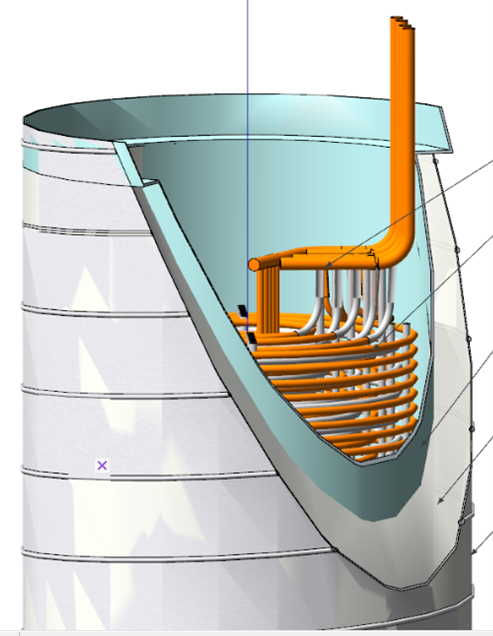Project Info
COMPLETE
 Project Title
Project Title
 Project Title
Project Title
Residential Multi-Function Heat Pumps: Heat Exchanger Improvement
Project Number ET22SWE0051 Organization SWE (Statewide Electric ETP) End-use Whole Building Sector Residential Project Year(s) 2022 - 2023Project Results
Residential Multi-Function Heat Pumps (MFHP) are a new product category that uses one outdoor unit with an efficient compressor and heat exchanger coil to provide space cooling, space heating, and domestic hot water heating. MFHPs have lower peak power consumption with the potential to avoid the need for electrical service breaker panel upgrades in many residential buildings, reducing cost and speeding up installation times compared to the typical separate space conditioning heat pump and standalone heat pump water heater products. In all MFHP systems, thermal energy must be exchanged from refrigerant-to-water and then from water-to-water to heat domestic hot water. The design of the heat exchangers has a significant impact on energy efficiency, cost, and the amount of refrigerant required in the system. This study collected specifications and cost data for commercially available heat exchangers, built computer models of the refrigerant-to-water and water-to-water heat exchangers, and completed a techno-economic analysis to recommend designs that can increase efficiency, reduce cost, and reduce refrigerant greenhouse gas (GHG) impacts. The results suggest that MFHP hot water heat exchanger designs using a refrigerant-to-water brazed plate heat exchanger combined with a pressurized tank containing an immersed water-to-water heat exchanger coil have the potential to save energy and reduce cost compared to ambient pressure tank with double-immersed coil designs.
Project Report Document
Loading PDF Preview...
